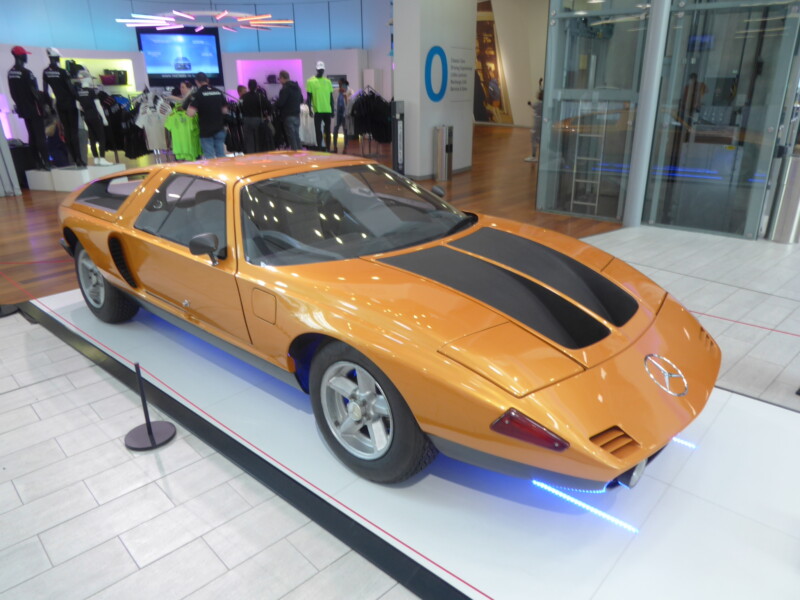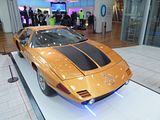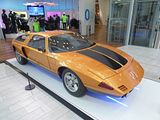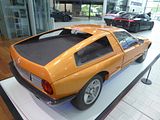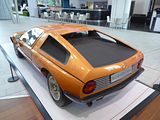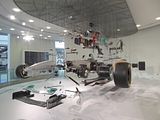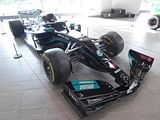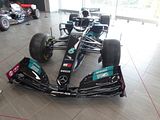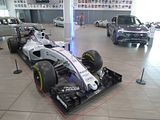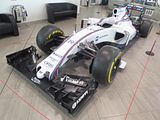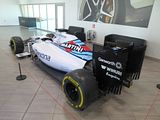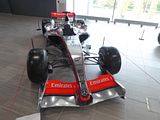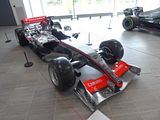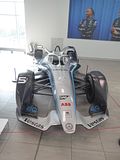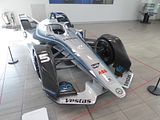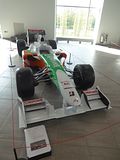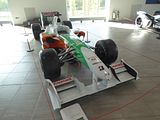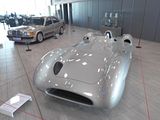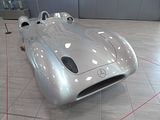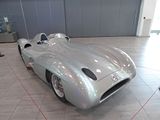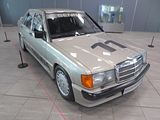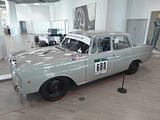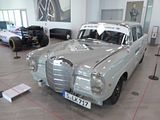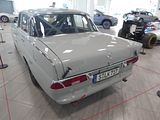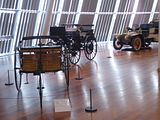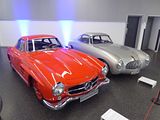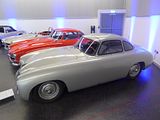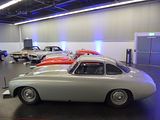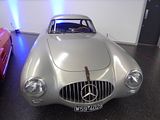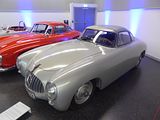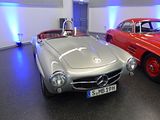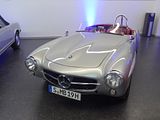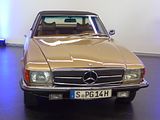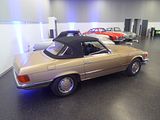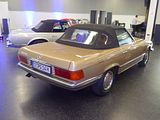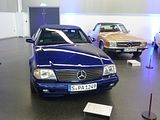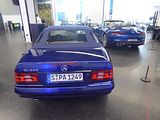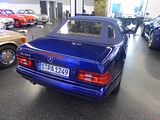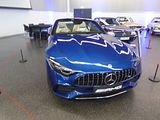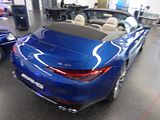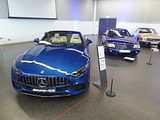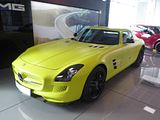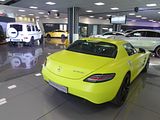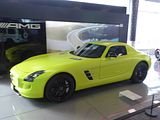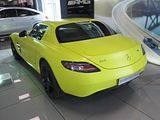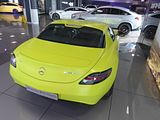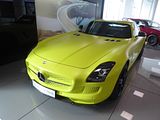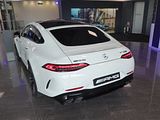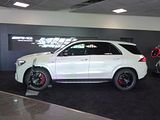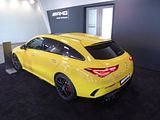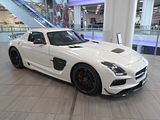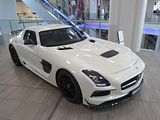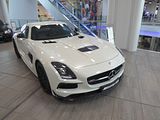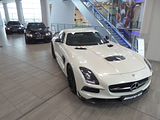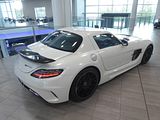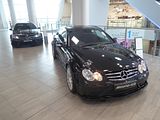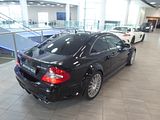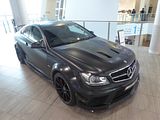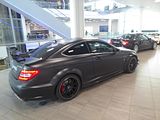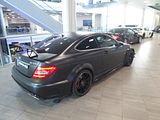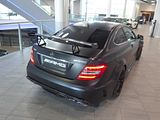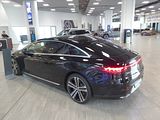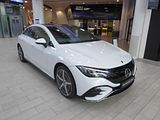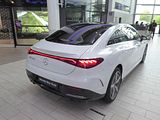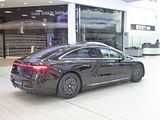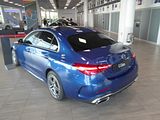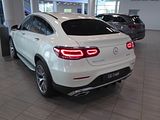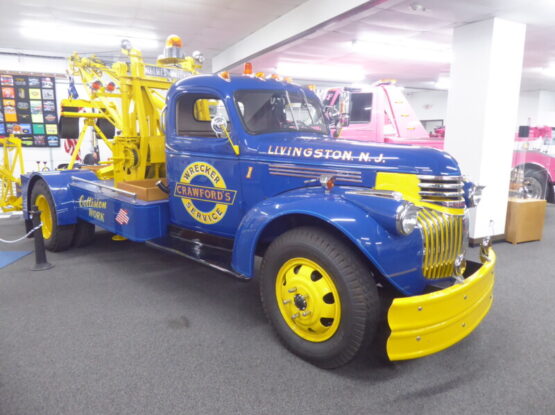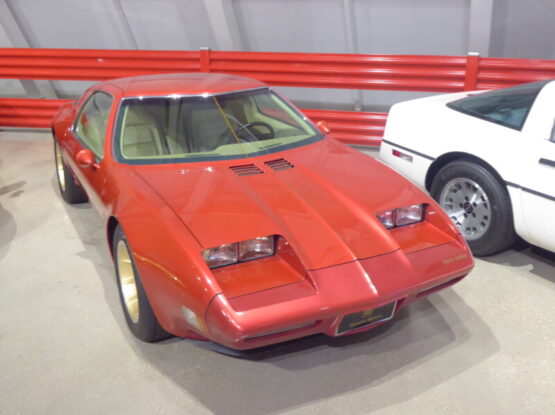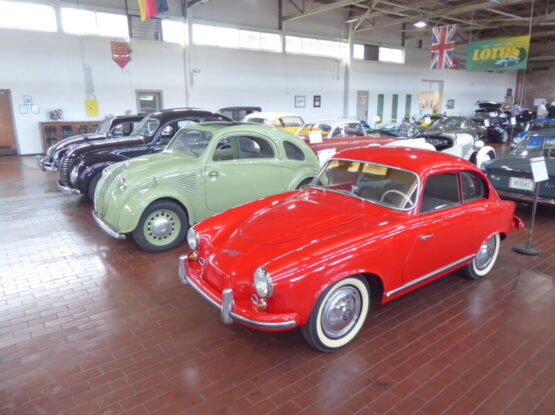Situated inside the former Brooklands race track, Mercedes-Benz World is a combination of a celebration of the heritage of Germany’s oldest motor manufacturer, as well as showroom for the latest models, and a place where the public can experience some of the high performance AMG cars on the adjoining test track. It has proved deservedly popular since its opening in October 2006. I remember going there, to host a client event, not long after it opened, and at the time the guides were a little limited in their knowledge of some of the heritage cars but everything else seems to be pretty much in order, with not just a lot of cars to look at, but a cinema, restaurant, simulator studio, cafe, a sizeable event spaces and a shop to add to the attractions. It worked for the event I was running, as something ait different for a bunch of IT folk to enjoy as a backdrop to the conference content, and it has worked for me as a place to visit just as a car enthusiast ever since. The format has not really changed in the intervening 16 plus years, but with constant refresh of the displays both as new models join the Mercedes-Benz range and also as the heritage cars are changed over, then there is always something fresh to see. There is not always time when I have been at a Brooklands event to pop in, but I do try to do so when I can. After all the Italian cars had gone from 2023 Auto Italia day, we did indeed head over to see what was on display and this what we found:
CLASSIC and HERITAGE CARS
First car to catch my attention was this fabulous C111. The Mercedes-Benz C111 was a series of experimental automobiles produced by Daimler-Benz in the 1960s and 1970s. The company was experimenting with new engine technologies, including Wankel engines, diesel engines, and turbochargers, and used the basic C111 platform as a testbed. Other experimental features included multi-link rear suspension, gull-wing doors and a luxurious interior with leather trim and air conditioning. The first version of the C111 was completed in 1969, and presented at the 1969 IAA in Frankfurt. The car used a fibreglass body shell and with a mid-mounted three-rotor direct fuel injected Wankel engine (code named M950F). The next C111 appeared in 1970; it was shown at the 1970 Geneva International Motor Show. It used a four-rotor engine producing 349 bhp. The car reportedly could reach a speed of 300 km/h (186 mph). The company decided not to adopt the Wankel engine and turned to diesel experiments for the second and third C111s. The C111-IID’s engine was a Mercedes-Benz OM 617, and produced 188 bhp at 4200 rpm. It was based on the Mercedes-Benz 85 kW variant of the OM 617 used in the Mercedes-Benz W 116 S-Class, but had a different turbocharger without a wastegate, which allowed an increased pressure ratio of 3.3. Daimler-Benz also added an intercooler that significantly improved the engine’s thermal efficiency. The C 111 III prototype that was completed in 1978, had a more aerodynamic bodywork that gave it an air drag coefficient of 0.195. It had a modified 3-litre version of the Mercedes-Benz OM 617 five-cylinder Diesel, now producing 228 bhp, and a BMEP of 1.68 MPa, resulting in a maximum torque of 401 Nm at 3600 min−1. It enabled the C 111 III to reach a top speed of 338 km/h (210 mph) at the Nardò Ring in 1978, and also to average a 16 l/100 km fuel consumption at an average speed of 325 km/h. The engine was fitted with an M-type inline injection pump of Bosch’s PE series with a maximum injection pressure of 40 MPa. A later 4.5 L twin KKK-turbocharged V8 version that produced 493 bhp/500 PS at 6000 rpm set another record, with an average lap-speed of 403.78 km/h (250.958 mph). This was achieved by Hans Liebold in 1 minute, 56.67 seconds on May 5, 1979. Total production was 16 cars: 13 first and second generation Wankel engined cars, two diesel engined third generation cars used in the Nardò record attempt, and a single V8 engined fourth generation car.
One of the most impressive displays is this, an exploded F1 car, more precisely a 2010 W01. It’s been here for several years and it’s not hard to imagine why. Not only is it fascinating to look at, you can only guess how long it must have taken to set the display up!
There was a more extensive display of Mercedes-powered race cars here in non-disassembled form, too.
McLaren-Mercedes MP4-27: The McLaren MP4-27 is a Formula One racing car designed by Vodafone McLaren Mercedes for the 2012 Formula One season. The chassis was designed by Paddy Lowe, Neil Oatley, Tim Goss, Andrew Bailey and John Iley and was powered by a customer Mercedes-Benz engine. The car was driven by former World Champions Jenson Button and Lewis Hamilton. It was launched on 1 February at the McLaren team base in Woking, Surrey, ahead of the first winter test sessions at Jerez de la Frontera. This was the last McLaren car that Lewis Hamilton drove for the team, as he moved to the Mercedes AMG Petronas F1 Team in 2013. This was also the last McLaren Formula One car to win a race until the McLaren MCL35M did so in 2021. The car achieved 7 wins, 8 poles and third place in the Constructors’ Championship in 2012. The MP4-27’s nose (bottom) compared with that of Force India’s VJM05 (top), a more typical design of 2012-specification cars. The MP4-27 was one of three 2012 cars not to have the so-called “platypus” nose, instead opting for a gradual sloped nose. The Marussia F1 MR01 and HRT F112 also had a similar low nose; the F112 featured a less pronounced step in the nose of the car compared to others on the grid, however, incorporating the two ideas of regulation compliance into the same car. After the struggles McLaren experienced in the build-up to the 2009 and 2011 seasons, the MP4-27 demonstrated early promise in testing. This was confirmed at the first race of the season in Australia, when Lewis Hamilton and Jenson Button qualified first and second for the race, the team’s first since the 2009 European Grand Prix. Button went on to win the race, with Hamilton finishing third despite team principal Martin Whitmarsh’s admission that the team had made a mistake in calculating Button’s fuel load, forcing the 2009 World Champion to enter a “severe fuel-saving mode” on the eighth lap of the race. The car showed the best pace of the field again at the Malaysian Grand Prix, once again taking first and second in qualifying, with Hamilton on pole. Wet weather conditions during the race, however, created unpredictable results. Both cars maintained their positions until the race was stopped early in the race. After the race was restarted Button broke his front wing and fell out of the points, whilst Hamilton finished third. At the 2012 Chinese Grand Prix the Mercedes cars found pace, allowing Nico Rosberg to take his first pole and win. Button started fifth and finished second; Hamilton initially qualified second, but a gearbox change set him back to seventh before he fought through to third place. The result put Hamilton into the lead of the drivers’ standings after his third successive third place in the first three races. Button moved up to second, two points behind Hamilton. The next three races were poor for the team, especially Button as the car seemed to lose the performance advantage it held at the start of the season.[citation needed] In Bahrain, Hamilton finished in eighth and Button retired whilst running in seventh. Consequently, the team lost their lead in the constructors’ standings for the first time in 2012 to Red Bull, whilst Sebastian Vettel won the race and overtook Hamilton to lead the drivers’ standings. In Spain, Hamilton finished eighth (although he had to fight through the field after being demoted from pole position to the back of the grid when his car ran out of fuel on the in-lap) and Button finished ninth. Mark Webber won the Monaco Grand Prix, whilst Hamilton started third but finished a close fifth. Button started from twelfth and fell to fourteenth for much of the race before eventually retiring, for his third finish with no points in 2012. The car was also fitted with a much higher front wing starting from that race onwards. During the 2012 Canadian Grand Prix it brought mixed results in qualifying and the race. Hamilton qualified 2nd, while Button qualified 10th due to a tyre strategy error. Lewis Hamilton became the 7th different driver to win a race in 7 races after he finished 1st, at the same time getting a podium finish for the first time since the 2012 Chinese Grand Prix. Button continued his dismal form by finishing 16th as he struggled due to tyre problems which resulted in a complete lack of pace in a track which he won last year. However, the 2012 European Grand Prix and the 2012 British Grand Prix proved disappointing for the team once again. In Valencia, despite Lewis Hamilton’s 2nd place in qualifying, he was unable to match the pace of Vettel and Alonso in the race and then during his 2nd pit stop, the front jack failed, causing him a delayed pit-stop. To top off his day, he collided with Pastor Maldonado while battling for 3rd place and hit the wall in the closing stages of the race, ending his chances of a podium finish. Jenson Button could only managed 8th position after starting 9th, again struggling with tyres. The British Grand Prix was a nightmare for the team. Hamilton could only manage 8th, while Button qualified 18th, but was promoted to 16th due to penalties of Kamui Kobayashi and Vergne from Toro Rosso. Hamilton eventually finished 8th, while Button finished in 10th place. It became clear that the car might need significant updates before the 2012 German Grand Prix so as to improve recent poor results and get back to winning ways. However, despite the upgrades, the cars lacked grip in qualifying due to wet weather. Button outqualified Hamilton for the first time in 2012, in 7th place while Hamilton is right behind in 8th place. However, both drivers were promoted to 6th and 7th respectively due to Mark Webber’s gearbox change which resulted in a 5 place grid drop. In the race, Button who was running 2nd after the 2nd pit stop but struggled to match both Alonso’s and Vettel’s pace due to flat spotting a tyre and was overtaken by Vettel in the penultimate lap in turn 6. However, the manner which Vettel overtook is deemed to be illegal as all 4 wheels have been out of the track to overtake. Vettel was giving a time penalty, demoting him to 5th place while Button was promoted back to an impressive 2nd place. Hamilton’s 100th F1 race was disastrous. He lost a few positions after a poor start and then suffered a puncture on Lap 3, ending his chances for a points-scoring finish. But he unlapped himself by overtaking Vettel and compromising his race. He then retired on Lap 56 after a mechanical failure in his car. During the 2012 Hungarian Grand Prix, the efficiency of the upgrades finally showed as the qualifying session was held in dry weather. Lewis Hamilton recovered after the disappointment in the German GP, he was dominant in every practice and qualifying, achieving McLaren’s 150th pole position. Button qualified in 4th place. Hamilton finished the race in 1st place, while Button finished a disappointing 6th. Since then McLaren has struggled to attain consistent results due to unreliability. Hamilton qualified in pole positions in Singapore, Abu Dhabi and Brazil but was unable to translate it to victory as his car experienced mechanical failures in Abu Dhabi and Singapore and being hit by Nico Hülkenberg in Brazil, which was Hamilton’s last race for McLaren. All of this happened when Hamilton was leading the race. They also lost 2nd place to Ferrari in the Constructors’ Championship. However Hamilton still managed to achieve his last win for McLaren at the new Circuit of the Americas which was the penultimate race of the season and Button’s win at the action packed finale at the Brazilian Grand Prix proved to be a small consolation of what was to be a mixed season for them.
EQ Silver Arrow 01: The Mercedes-Benz EQ Silver Arrow 01 was the competitor for the maiden season of the Mercedes-Benz EQ Formula E Team in 2019/20 (Season 6) of the FIA Formula E Championship. The Silver Arrow 01 was piloted by Stoffel Vandoorne and Nyck de Vries. Unveiled in September 2019, the Mercedes-Benz EQ Silver Arrow 01 featured the distinct metallic silver of all Mercedes-Benz race cars. Prior to the season resuming after the COVID-19 pandemic, Mercedes brought back and updated with a special all-black base livery to join the call for diversity and stand against racism and all forms of discrimination. The drivers also wore black racing overalls. Just like all Formula E race cars, the Silver Arrow 01 features a 56-kWh battery supplied by McLaren Applied Technologies pushed to 250 kw (or 335bhp). The car could accelerate from 0-62 mph (0-100 km/h) in just 2.8 seconds, with a potential top speed of 174 mph (280 km/h). The Silver Arrow 01’s competitive race debut came at the Diriyah ePrix double race weekend. The duo started well, Vandoorne qualifying on the front row with De Vries just behind him in third. It was an eventful first race and Vandoorne still held onto a podium step with third whilst De Vries claimed sixth position, marking an impressive first race in the sport for the team. Despite a challenging qualifying for the second race, Vandoorne still managed to convert twelfth into another third position, whilst De Vries was unable to score any points. A strong performance followed in Santiago, Chile, during race two, De Vries leading a 5-6 finish after the duo qualified eighth and ninth. The third and fourth races in Mexico City and Marrakesh were disappointing for the team after the initial performances: neither driver was classified in Mexico, whilst both cars finished outside the top ten in Marrakesh, despite promising qualifying sessions from De Vries in both locations. Less than two weeks later, the season was suspended in response to the ongoing Covid-19 pandemic. The season resumed and concluded in August, with six races in nine days at the Tempelhof Airport Street Circuit in Berlin. The first race saw the team return to form, De Vries leading a 4-6 finish. Vandoorne followed this up with a fifth place in race two, though De Vries had to retire the car after yet another strong qualifying session. Race three saw neither driver score points after Vandoorne suffered a puncture and De Vries was punished after causing a collision. The latter redeemed himself in race four, scoring a fourth position after qualifying fifth. Vandoorne scored two points in the fifth race, coming from eighteenth on the grid to finish ninth. The team’s finest moment of the season, came in the final race: a 1-2 finish on the more technical extended circuit layout. This was a maiden Formula E victory for Vandoorne, after earning pole position, whilst De Vries earned his first Formula E podium after qualifying fourth. Vandoorne’s consistency led him to finishing the season ranking second in the Drivers’ Championship with 87 points, while Mercedes finished third in the Teams’ Championship, an impressive debut in a new kind of motorsport. De Vries finished eleventh with 60 points in total.
Force India VJM02: The Force India VJM02 was Force India’s Formula One car for the 2009 Formula One season. It was revealed in a low-key press event, after the car’s first test at the Silverstone Circuit, on February 28, 2009, before a public test at the Circuito de Jerez in Spain the following day. The Northamptonshire-based team’s car is decorated in the colours of the Indian flag, and was driven by the same drivers as in 2008 – Giancarlo Fisichella and Adrian Sutil. The VJM02 was the first British-based foreign F1 car to utilize ExxonMobil fuel and lubricants as Mobil brand, in which Esso and Exxon was used on Red Bull RB13 8 years later along with Mobil from 2017, as they are currently ExxonMobil brands from 1999. The VJM02 was also the first Mercedes-powered non-McLaren Formula One car since the Sauber C13 in the 1994 season. Two men instrumental in the early design of the VJM02, chief technical officer Mike Gascoyne and team principal Colin Kolles, were released from their contracts in late 2008, after a conflict with team owner Vijay Mallya. The team decided late in development to change from a Ferrari to a Mercedes engine, along with McLaren gearboxes and hydraulics. Adapting to these new components required a minor redesign of several parts of the car, including the suspension, side-pods and the rear aerodynamics. In making such a late switch, the team chose to forfeit testing time in favour of development time, but were confident that the change gave them a better car than would otherwise have been the case. The car also had a livery change, which turned from a white, red and gold paintjob, to a white, green and orange livery, which are the colours of the Flag of India, to note their Hindi heritage. At the 2009 Bahrain Grand Prix, a revised floor and diffuser for the VJM02 were introduced, as well as an upgraded front wing and reprofiled sidepods. Driver Giancarlo Fisichella welcomed the upgrades, claiming the car’s current lack of downforce will be addressed by the new modifications. The team brought further updates at the 2009 European Grand Prix, which worked very well, giving the team their first podium finish at Spa, a day after Fisichella scored an unexpected pole position. New rules in place for the 2009 season require cars to have narrower and higher rear wings and wider and lower front wings, designed to reduce air disturbance to following cars and hence make overtaking easier. Slick tyres will be re-introduced into Formula One, after being absent since 1998. This will increase the VJM02’s tyre grip by about 20%. The VJM02 had the option to feature a Kinetic Energy Recovery System (KERS), which allows energy which would otherwise be wasted while braking to be re-used in set amounts per lap, via a boost button on the driver’s steering wheel. The energy is stored in either a battery or a flywheel. This is the result of new rules for the 2009 season. The VJM02 was supposed to use the same system from the McLaren MP4-24, however Force India did not use it during the season. Overall, the VJM02’s performance was almost as poor as the previous season’s, only getting two points finishes, which ended up with them 9th on the constructors championship. Despite this, those two points finishes were remarkable: in Belgium, Fisichella got a surprise first pole position for the team and eventually finished second behind Kimi Räikkönen, which eventually gave him a fill-in spot in Ferrari in place of the injured Felipe Massa (Vitantonio Liuzzi being his replacement), while Sutil managed a fourth place and a fastest lap in the next race, the Italian Grand Prix.
This is a replica of the W196 streamliner. One of the most dominant cars to have ever raced at the pinnacle of motorsport, the Mercedes-Benz W196 drove its competitors to despair during the 1954 and 1955 Formula 1 seasons in which it was entered, capturing the only two World Championships in which it competed. Mercedes had been absent in Grand Prix racing for twenty years, but a combination of new Formula 1 regulations and a thriving economic turnaround in Germany allowed the Silver Arrows to compete once again. Expectations were high; in the past the Mercedes-Benz racing cars were not only the fastest, but also the most technologically advanced; a showcase of the company’s advanced technical capabilities. The W196 did not disappoint. Considering the relatively small displacement of 2.5 litres, the team of engineers, headed by Fritz Nallinger and Rudolf Uhlenhautand, chose a surprising and different format for the long straight eight engine, though this risk soon yielded astonishing results. The W196 was the first Formula 1 car to use desmodromic valves to allow the significantly smaller engine to rev higher, as well as the first to use a Bosch-developed fuel injection system, which had already been successfully used on the 300SL racing cars. Adapted from the DB 601 high-performance V12 used on the Messerschmitt Bf 109E fighter, the novel fuel injection system allowed for 257 brake horsepower at the time of its debut, rising to 290 bhp at an impressive 8500 rpm after a year of on-track development. Also carried over from the 300SL was the space-frame chassis, which featured an entirely new approach to chassis building, combining light weight with exceptional rigidity. Sparing no expense, the engineers developed a variety of track specific versions of the W196 with three wheelbases and two interchangeable body styles: the ‘Type Monza’ low-drag streamliner body, designed for high-speed circuits, and the more open-wheel configuration, for the more technical, twisty circuits. Still busy developing the cars, Mercedes missed the first three races of the 1954 season; the belated debut came at the French Grand Prix in Reims, where the streamlined body was immediately right at home. Racing manager Alfred Neubauer hired the – initially reluctant – superstar Juan Manuel Fangio to partner the German duo of Hans Herrmann and Karl Kling, and it was instantly obvious that the German marque’s approach was too much for the Italian and British specialist manufacturers to match. Fangio helped Mercedes to continue a debut-winning tradition by piloting the W196 to a debut victory, a few metres ahead of Kling, whilst Herrmann posted the fastest lap. The open-wheel variant of the W196 debuted two races later in the team’s home Grand Prix at the Nürburgring, after a tougher race at Silverstone. Fangio again was victorious, and would go on to dominate three races in a row, winning at the Swiss and Italian Grands Prix as well. In a relatively poor showing in the final race in Spain, the Argentinian claimed a podium as he finished the season as the World Champion. While Fangio started the season at Alfa Romeo, winning two races with the Italians, his points tally with the W196 alone would have been enough to win him the World Championship title. For 1955, Fangio was joined by a new team-mate, the up-and-coming Stirling Moss, creating a virtually invincible pairing. The Argentine driver started the season on a high by winning his home Grand Prix in soaring temperatures that exhausted most of his opponents. The W196’s lowest moment followed, as it failed to score a single point at Monaco: all three of the entered cars were hampered by reliability problems. Despite the horrifying 1955 Le Mans disaster shortening the Formula 1 season, the W196 completely dominated the remaining four races, finishing first and second in Belgium (Fangio-Moss), the Netherlands (Fangio-Moss) and Italy (Fangio-Taruffi), whilst at the penultimate race in Great Britain, the Mercedes team took a remarkable 1-2-3-4, Moss claiming his first Grand Prix victory ahead of Fangio, Kling and Piero Taruffi. Needless to say, Fangio was crowned champion again with Moss a distant second. Shaken by the Le Mans accident, Mercedes-Benz left Grand Prix racing at the end of the season for the third time in their history, retiring their almost invincible car after racing for just one year and two months. Overall, the versatile W196’s track record was impressive indeed: nine victories, eight pole positions and nine fastest laps in the twelve Grand Prix races in which it was entered, and, of course, Fangio’s world titles in 1954 and 1955. It is widely agreed that the only reason the W196 did not win more titles is that the Manufacturers’ Championship was not introduced until 1958. The W196 Streamliner raced to victory by the legendary Juan Manuel Fangio during a gruelling French Grand Prix at Reims on the 4th of July 1954. The race was the W196’s first competitive foray and Mercedes’ first Grand Prix race for twenty years. It was a dominant return as Fangio set the pace averaging 124 mph (200 km/h) during his practice lap. The Argentine and his teammate Karl Kling led the race from the start, driving almost side by side until the end, with their rivals unable to keep pace. With one lap to go, Mercedes finally ordered the duelling drivers to stop their fight to ensure both cars reached the end, Fangio eventually edging out Kling by just 0.1 seconds. It was a historical win for many reasons: it was Mercedes’ and tyre supplier Continental’s first official Formula 1 victory, and the first official race win to be achieved by a non-Italian constructor. Having also emerged victorious at the 1954 and 1955 Italian Grands Prix, the W196 Streamliner remains the only closed wheel car to win a race in Formula 1 history.
Also with racing pedigree were a 190E 2.3-16 from the 1980s and a “Fintail” race 220SE from the early 1960s.
Heading a display of very early Mercedes-Benz models was this, one of a number of replicas of the 1886 Patent MotorWagen. The Benz Patent-Motorwagen (“patent motorcar”), built in 1885 by the German Karl Benz, is widely regarded as the first practical modern automobile and was the first car put into production. It was patented and unveiled in 1886. The original cost of the vehicle in 1886 was 600 imperial German marks. After developing a successful gasoline-powered two-stroke piston engine in 1873, Benz focused on developing a motorized vehicle while maintaining a career as a designer and manufacturer of stationary engines and their associated parts. The Benz Patent-Motorwagen was a motor tricycle with a rear-mounted engine. The vehicle contained many new inventions. It was constructed of steel tubing with woodwork panels. The steel-spoked wheels and solid rubber tires were Benz’s own design. Steering was by way of a toothed rack that pivoted the unsprung front wheel. Fully elliptic springs were used at the back along with a beam axle and chain drive on both sides. A simple belt system served as a single-speed transmission, varying torque between an open disc and drive disc. The first Motorwagen used the Benz 954 cc single-cylinder four-stroke engine with trembler coil ignition. This new engine produced 500 watts (2⁄3 hp) at 250 rpm in the Patent-Motorwagen, although later tests by the University of Mannheim showed it to be capable of 0.9 bhp at 400 rpm. It was an extremely light engine for the time, weighing about 100 kg (220 lb). Although its open crankcase and drip oiling system would be alien to a modern mechanic, its use of a pushrod-operated poppet valve for exhaust would be quite familiar. A large horizontal flywheel stabilized the single-cylinder engine’s power output. An evaporative carburettor was controlled by a sleeve valve to regulate power and engine speed. The first model of the Motorwagen had not been built with a carburettor, rather a basin of fuel soaked fibres that supplied fuel to the cylinder by evaporation. The vehicle was awarded the German patent number 37435, for which Karl Benz applied on 29 January 1886. Following official procedures, the date of the application became the patent date for the invention once the patent was granted, which occurred in November of that year. Benz unveiled his invention to the public on 3 July 1886, on the Ringstrasse in Mannheim. For the first time Karl Benz publicly drove the car on July 3, 1886, in Mannheim at a top speed of 16 km/h (10 mph). Benz later made more models of the Motorwagen: model number 2 had 1.5 hp engine, and model number 3 had 1.5 kW (2 hp) engine, allowing the vehicle to reach a maximum speed of approximately 16 km/h (10 mph). The chassis was improved in 1887 with the introduction of wooden-spoke wheels, a fuel tank, and a manual leather shoe brake on the rear wheels. About 25 Patent-Motorwagen were built between 1886 and 1893. Bertha Benz, Karl’s wife, whose dowry was said to have made a portion of contribution to finance the development of the Patent-Motorwagen, was aware of the need for publicity. She took the Patent-Motorwagen No. 3 and drove it on the first long-distance internal combustion automobile road trip to demonstrate its feasibility. That trip occurred in early August 1888, when she took her sons Eugen and Richard, fifteen and fourteen years old, respectively, on a ride from Mannheim through Heidelberg, and Wiesloch, to her maternal hometown of Pforzheim. In Germany, a parade of antique automobiles celebrates this historic trip of Bertha Benz every two years. On February 25, 2008, the Bertha Benz Memorial Route, following the route of Benz’s journey, was officially approved as a Tourist or Scenic Route by the German authorities as a route of industrial heritage of mankind. The 194 km (121 mi) of signposted route leads from Mannheim via Heidelberg to Pforzheim (Black Forest) and back.
Also on the ground floor was a special display of SL models, marking both the launch of the latest model to bear the name and the 70th anniversary of SL cars.
Known under development as the W198, the first iteration of the SL-Class grand tourer was the fastest production car of its day. Introduced in 1954 as a two-seat coupé with distinctive gull-wing doors, it was later offered as an open roadster. Built by Daimler-Benz AG, the direct fuel injected production model was based on the company’s highly successful yet somewhat less powerful carburettor overhead cam straight 6 1952 racer, the W194. The idea of a toned-down Grand Prix car tailored to affluent performance enthusiasts in the booming post-war American market was suggested by Max Hoffman. Mercedes accepted the gamble and the new 300 SL – 300 for its 3.0 litre engine displacement and SL for Sport Leicht (Sport Light) – was introduced at the 1954 New York Auto Show rather than the Frankfurt or Geneva gatherings company models made their usual debuts. Immediately successful and today iconic, the 300 SL stood alone with its distinctive doors, first-ever production fuel injection, and world’s fastest top speed. Even with the upward opening doors, the 300 SL had an unusually high sill, making entry and exit from the car’s cockpit problematic. A steering wheel with a tilt-away column was added to improve driver access. The 300 SL’s main body was steel, with aluminium bonnet, doors and boot lid. It could also be ordered with an 80 kg (180 lb) saving all-aluminium outer skin at tremendous added cost; just 29 were made. Like the W194, the 300 SL borrowed its 3.0 litre overhead cam straight-6 from the regular four-door 300 (W186 “Adenauer”) luxury tourer introduced in 1951. Featuring an innovative diagonal aluminium head that allowed for larger intake and exhaust valves, it was canted to the right at forty-five-degrees to fit under the SL’s considerably lower bonnet line. In place of the W194’s triple two-barrel Solex carburettors, a groundbreaking Bosch mechanical direct fuel injection was installed, boosting power almost 25% over the Grand Prix car’s. Derived from the DB 601 V12 used on the Messerschmitt Bf 109E fighter of World War II, it raised output from 175 hp to 215 hp, almost double that of the original Type 300 sedan’s 115 hp. An optional, even more powerful version, with radical camshaft developed 240 hp @ 6100 rpm and a maximum torque of 217 lb⋅ft @ 4800 rpm, but was rough for city use. The result was a top speed of up to 260 km/h (160 mph) depending on gear ratio and drag, making the 300 SL the fastest production car of its time. However, unlike today’s electrically powered fuel injection systems, the 300 SL’s mechanical fuel pump would continue to inject gasoline into the engine during the interval between shutting off the ignition and the engine’s coming to a stop; this unburned gasoline washed lubricating oil from the cylinder walls, which not only left them unprotected in affected areas during start-up but would dilute the engine’s entire oil supply if the car was not driven hard or long enough to reach a sufficient temperature to evaporate the fuel out of the oil. Exacerbating the problem was the engine’s large racing-oriented oil cooler and enormous 10 litre oil capacity, which virtually guaranteed the oil would not get hot enough. In practice, many owners would block off airflow through the oil cooler and stick rigidly to the appropriately low 1,000 mile recommended oil change interval. An auxiliary fuel pump provided additional fuel for extended high speed operation or cold starts; overuse would also lead to dilution of the oil., Clutch operation was initially very heavy, remedied by an improved clutch arm helper spring which reduced pedal force. From March 1963 to the end of production later that year, a light alloy crankcase was used on a total of 209 vehicles. Aerodynamics played an important role in the car’s speed, with Mercedes-Benz engineers placing horizontal “eyebrows” over the wheel openings to reduce drag. Unlike many cars of the 1950s, steering was relatively precise and the four-wheel independent suspension allowed for a reasonably comfortable ride and markedly better overall handling. However, the rear swing axle, jointed only at the differential, not at the wheels themselves, could be treacherous at high speeds or on imperfect roads due to extreme changes in camber. The enormous fuel tank capacity also caused a considerable difference in handling depending on the quantity of fuel on board. More than 80% of the vehicle’s total production of approximately 1400 units were sold in the US, making the Gullwing the first Mercedes-Benz widely successful outside its home market and thoroughly validating Hoffman’s prediction. The 300 SL is credited with changing the company’s image in America from a manufacturer of solid but staid luxury automobiles to one capable of rendering high-performance sports cars. It should be noted initial sales were sluggish due to many things, of which the price was one. Initial prices were about $6,400, a new Chevrolet Bel-Air could be purchased for $1,700 in the same year. Then there were few mechanics, even at the dealers, who understood the fuel injection system enough to do repairs. Nonetheless, 1400 were built by 1957, at which point Mercedes introduced a roadster version which was broadly similar, but with conventional doors. It was produced until 1963, and achieved sales of 1858 units.
The Mercedes-Benz 300 SLR (W 196 S) is a two-seat sports racing car that took part in the 1955 World Sportscar Championship before a catastrophic crash and fire at Le Mans later that year ended its domination prematurely. The car was designated “SL-R” (for Sport, Leicht, Rennen, eng: sport, light, racing version), which was later condensed to “SLR”. Technically, the W 196 S is based on the W 196 R, but has a slightly different engine, displacing 3 litres. Just as the W 196 R Formula One racer’s M 196 R engine, the 300 SLR’s M 196 S engine is a direct-injected 3-litre straight-eight engine (but with a 78 mm bore and stroke); its rated power is 302 PS. The W 196 S’s monoposto driving position was modified to standard two-abreast seating, headlights were added, and a few other changes made to adapt a strictly track competitor to a 24-hour road/track sports racer. Hall of Fame Formula One driver and former Mercedes-Benz team 300 SLR race driver Stirling Moss described the 300 SLR as “The greatest sports racing car ever built – really an unbelievable machine.” Two of the nine 300 SLR rolling chassis produced (nicknamed the “Uhlenhaut Coupé”) were converted into 300 SLR/300 SL hybrids. Effectively road legal racers, they had coupé styling, gull-wing doors, and a footprint midway between the two models.
Produced between May 1955 and February 1963, having first been seen in prototype at the 1954 New York Auto Show, the 190SL was designed as a more affordable sports car than the exclusive and rather pricey 300SL, sharing its basic styling, engineering, detailing, and fully independent suspension. While both cars had double wishbones in front and swing axles at the rear, the 190 SL did not use the 300 SL’s purpose-built W198 tubular spaceframe. Instead, it was built on a shortened monocoque R121 platform modified from the W120 saloon. The 190 SL was powered by a new, slightly oversquare 105 PS Type M121 1.9 litre four cylinder engine. Based on the 300 SL’s straight six, it had an unchanged 85 mm bore and 4.3 mm reduced 83.6 mm stroke, was fitted with twin-choke dual Solex carburettors, and produced 120 gross hp. In detuned form, it was later used in the W120 180 and W121 190 models. Both the 190 SL and the 300 SL were replaced by the Mercedes-Benz 230SL in 1963.
By 1955, Mercedes-Benz Technical Director Prof. Fritz Nallinger and his team held no illusions regarding the 190 SL’s lack of performance, while the high price tag of the legendary 300 SL supercar kept it elusive for all but the most affluent buyers. Thus Mercedes-Benz started evolving the 190 SL on a new platform, model code W127, with a fuel-injected 2.2 litre M127 inline-six engine, internally denoted as 220SL. Encouraged by positive test results, Nallinger proposed that the 220SL be placed in the Mercedes-Benz program, with production commencing in July 1957. However, while technical difficulties kept postponing the production start of the W127, the emerging new S-Class W112 platform introduced novel body manufacturing technology altogether. So in 1960, Nallinger eventually proposed to develop a completely new 220SL design, based on the “fintail” W 111 sedan platform with its chassis shortened by 11.8 in, and technology from the W112. This led to the W113 platform, with an improved fuel-injected 2.3 litre M127 inline-six engine and the distinctive “pagoda” hardtop roof, designated as 230 SL. The 230 SL made its debut at the prestigious Geneva Motor Show in March 1963, where Nallinger introduced it as follows: “It was our aim to create a very safe and fast sports car with high performance, which despite its sports characteristics, provides a very high degree of travelling comfort”. The W113 was the first sports car with a “safety body,” based on Bela Barényi’s extensive work on vehicle safety: It had a rigid passenger cell and designated crumple zones with impact-absorbing front and rear sections built into the vehicle structure. The interior was “rounded,” with all hard corners and edges removed, as in the W111 sedan. Production of the 230 SL commenced in June 1963 and ended on 5 January 1967. Its chassis was based on the W 111 sedan platform, with a reduced wheelbase by 11.8 in, recirculating ball steering (with optional power steering), double wishbone front suspension and an independent single-joint, low-pivot swing rear-axle with transverse compensator spring. The dual-circuit brake system had front disc brakes and power-assisted rear drum brakes. The 230 SL was offered with a 4-speed manual transmission, or an optional, very responsive fluid coupled (no torque converter) 4-speed automatic transmission, which was popular for US models. From May 1966, the ZF S5-20 5-speed manual transmission was available as an additional option, which was particularly popular in Italy. The 2,308 cc M127.II inline-six engine with 150 hp and 145 lb/ft torque was based on Mercedes-Benz’ venerable M180 inline-six with four main bearings and mechanical Bosch multi-port fuel injection. Mercedes-Benz made a number of modifications to boost its power, including increasing displacement from 2,197 cc, and using a completely new cylinder head with a higher compression ratio (9.3 vs. 8.7), enlarged valves and a modified camshaft. A fuel injection pump with six plungers instead of two was fitted, which allowed placing the nozzles in the cylinder head and “shooting” the fuel through the intake manifold and open valves directly into the combustion chambers. An optional oil-water heat exchanger was also available. Of the 19,831 230 SLs produced, less than a quarter were sold in the US. Looking identical, the 250 SL was introduced at the 1967 Geneva Motor Show. Production had already commenced in December 1966 and ended in January 1968. The short one-year production run makes the 250 SL the rarest of the W113 series cars. The 250 SL retained the stiffer suspension and sportier feel of the early SLs, but provided improved agility with a new engine and rear disc brakes. Range also improved with increased fuel tank capacity from 65 litres to 82. Like its predecessor, the 250 SL was offered with a 4-speed automatic transmission, and 4-speed or ZF 5-speed manual transmissions. For the first time, an optional limited slip differential was also available. The main change was the use of the 2,496 cc M129.II engine with a larger stroke, increased valve ports, and seven main bearings instead of four. The nominal maximum power remained unchanged at 150 hp, but torque improved from 145 lb/ft to 159 lb/ft. Resiliency also improved with a new cooling water tank (“round top”) with increased capacity and a standard oil-water heat exchanger. The 250 SL also marked the introduction of a 2+2 body style, the so-called “California Coupé”, which had only the removable hardtop and no soft-top: a small fold-down rear bench seat replaced the soft-top well between passenger compartment and boot. It is estimated that only 10% of the 250SLs that were brought into America were California Coupes. Of the 5,196 250 SLs produced, more than a third were sold in the US.The 280 SL was introduced in December 1967 and continued in production through 23 February 1971, when the W 113 was replaced by its successor, the entirely new and substantially heavier R107 350 SL. The main change was an upgrade to the 2,778 cc M130 engine with 170 hp and 180 lb/ft, which finally gave the W 113 adequate power. The performance improvement was achieved by increasing bore by 4.5 mm (0.2 in), which stretched the limits of the M180 block, and required pairwise cylinder casts without cooling water passages. This mandated an oil-cooler, which was fitted vertically next to the radiator. Each engine was now bench-tested for two hours prior to being fitted, so their power specification was guaranteed at last. The M130 marked the final evolution of Mercedes-Benz’ venerable SOHC M180 inline-six, before it was superseded by the entirely new DOHC M110 inline-six introduced with R107 1974 European 280 SL models. For some time, it was also used in the W 109 300 S-Class, where it retired the expensive 3 liter M189 alloy inline-six. Over the years, the W 113 evolved from a sports car into a comfortable grand tourer, and US models were by then usually equipped with the 4-speed automatic transmission and air conditioning. Manual transmission models came with the standard 4-speed or the optional ZF 5-speed, which was ordered only 882 times and thus is a highly sought-after original option today. In Europe, manual transmissions without air conditioning were still the predominant choice. Of the 23,885 280 SLs produced, more than half were sold in the US.
With prices of the classic Pagoda model having risen to unaffordable for most people attention has started to switch to it successor, the R107 SL range, which had a long production life, being the second longest single series ever produced by the automaker, after the G-Class. The R107 and C107 took the chassis components of the mid-size Mercedes-Benz W114 model and mated them initially to the M116 and M117 V8 engines used in the W108, W109 and W111 series. The SL variant was a 2-seat convertible/roadster with standard soft top and optional hardtop and optional folding seats for the rear bench. The SLC (C107) derivative was a 2-door hardtop coupe with normal rear seats. The SLC is commonly referred to as an ‘SL coupe’, and this was the first time that Mercedes-Benz had based a coupe on an SL roadster platform rather than on a saloon, replacing the former saloon-based 280/300 SE coupé in Mercedes lineup. The SLC was replaced earlier than the SL, with the model run ending in 1981, with a much larger model, the 380 SEC and 500SEC based on the new S class. Volume production of the first R107 car, the 350 SL, started in April 1971 alongside the last of the W113 cars; the 350 SLC followed in October. The early 1971 350SL are very rare and were available with an optional 4 speed fluid coupling automatic gearbox. In addition, the rare 1971 cars were fitted with Bosch electronic fuel injection. Sales in North America began in 1972, and cars wore the name 350 SL, but had a larger 4.5L V8 with 3 speed auto (and were renamed 450 SL for model year 1973); the big V8 became available on other markets with the official introduction of the 450 SL/SLC on non-North American markets in March 1973. US cars sold from 1972 through 1975 used the Bosch D Jetronic fuel injection system, an early electronic engine management system. From July 1974 both SL and SLC could also be ordered with a fuel-injected 2.8L straight-6 as 280 SL and SLC. US models sold from 1976 through 1979 used the Bosch K Jetronic system, an entirely mechanical fuel injection system. All US models used the 4.5 litre engine, and were called 450 SL/SLC. In September 1977 the 450 SLC 5.0 joined the line. This was a homologation version of the big coupé, featuring a new all-aluminium five-litre V8, aluminium alloy bonnet and boot-lid, and a black rubber rear spoiler, along with a small front-lip spoiler. The 450SLC 5.0 was produced in order to homologate the SLC for the 1978 World Rally Championship. Starting in 1980, the 350, 450 and 450 SLC 5.0 models (like the 350 and 450 SL) were discontinued in 1980 with the introduction of the 380 and 500 SLC in March 1980. At the same time, the cars received a very mild makeover; the 3-speed automatic was replaced by a four-speed unit, returning to where the R107 started in 1971 with the optional 4 speed automatic 350SL. The 280, 380 and 500 SLC were discontinued in 1981 with the introduction of the W126 series 380 and 500 SEC coupes. A total of 62,888 SLCs had been manufactured over a ten-year period of which just 1,636 were the 450 SLC-5.0 and 1,133 were the 500 SLC. Both these models are sought by collectors today. With the exception of the SL65 AMG Black Series, the SLC remains the only fixed roof Mercedes-Benz coupe based on a roadster rather than a sedan. Following the discontinuation of the SLC in September 1981, the 107 series continued initially as the 280, 380 and 500 SL. At this time, the V8 engines were re-tuned for greater efficiency, lost a few hp and consumed less fuel- this largely due to substantially higher (numerically lower) axle ratios that went from 3.27:1 to 2.47:1 for the 380 SL and from 2.72:1 to 2.27:1 for the 500 SL. From September 1985 the 280 SL was replaced by a new 300 SL, and the 380 SL by a 420 SL; the 500 SL continued and a 560 SL was introduced for certain extra-European markets, notably the USA, Australia and Japan. Also in 1985, the Bosch KE Jetronic was fitted. The KE Jetronic system varied from the earlier, all mechanical system by the introduction of a more modern engine management “computer”, which controlled idle speed, fuel rate, and air/fuel mixture. The final car of the 18 years running 107 series was a 500 SL painted Signal red, built on August 4, 1989; it currently resides in the Mercedes-Benz museum in Stuttgart.
Designed in 1984, and launched in 1989, the R129 was based on the shortened floorpan of the Mercedes-Benz W124 and featured many innovative details for the time, for instance electronically controlled damping (Adaptive Damping System ADS, optional) and a hidden, automatically extending roll-over bar. The R107’s somewhat dated rear suspension with semi-trailing arms gave way to a modern multi-link axle. The number of standard features was high, with electric action for the windows, mirrors, seats and hydraulic convertible top. This car has the distinction of being the first passenger vehicle to have seat belts integrated into the seats as opposed to anchoring to the floor, B-pillar, and transmission tunnel. Initially, there were three different engines available: 300 SL with a M103 3.0 L 12-valve SOHC I6 (188 bhp), a 300 SL-24 with a M104 3.0 L 24-valve DOHC I6 (228 bhp) and the 500 SL with a M119 5.0 L 32-valve DOHC V8 (322 bhp) . These were joined in July 1992 by the 600 SL with a M120 6.0 L 48-valve DOHC V12 (389 bhp). There was a choice of 5-speed manual or 4–5 speed automatic for the six-cylinder cars; the V8 and V12 could only be ordered with a 4-speed automatic gearbox. In autumn 1993 Mercedes-Benz rearranged names and models. Also, the 300 SL and 300 SL-24 were respectively replaced by: SL 280 with a M104 2.8 L 24-valve DOHC I6 (190 bhp) and the SL 320 with a M104 3.2 L 24-valve DOHC I6 (228 bhp). Only the 280 was available with a manual gearbox. SL 500 and 600 continued with their respective engines. Starting in 1993, the cars were re-designated. For example, 500 SL became SL 500. Starting in model year 1994, Mercedes-Benz offered special SL models from time to time, such as the Mille Miglia edition cars of model year 1994 or the SL edition of model year 2000. 1994 cars had minor updates for the car and then in 1995 there was a minor facelift for the car, with the front fender vents updated to only 2 rounded slots, rather than 3 squared slots, and bumpers in body colour. The V8 and V12s were upgraded to 5 speed electronic transmission, the previous transmission was hydraulic 4-speed. A second facelift occurred in 1998 with many detailed changes applied, including new external mirrors, 17″ wheels and new bumpers. Also new were the engines, a SL 280 with a M112 2.8 L 18-valve SOHC V6 (201 bhp); SL 320 with a M112 3.2 L 18-valve SOHC V6 (221 bhp) and a SL 500 with a M113 5.0 L 24-valve SOHC V8 (302 bhp). The V12 engine remained unchanged. The car was replaced by the R230 generation SL in 2001, after 213,089 had been built. There were a number of very low volume AMG versions of the car, including this SL70 AMG. This was powered by a 7.1 litres (7,055 cc) V12 engine developing 496 PS (489 bhp) at 5,500 rpm and a maximum torque of 720 Nm (531 lb/ft) at 3,900 rpm. It was a bored out version of M120 6.0 V12 and with a longer stroke. Produced between 1996 and 1997, just 150 units were made.
Completing the display was the latest R232 model, deliveries of which started earlier in the year.
THE AMGs
On the top floor of the building there is a large reserved for AMG cars. This usually comprises a mix of the AMG models that are currently in production and some older models often rarer cars from the days when AMG was a brand few had heard of and whose cars were produced in tiny numbers. That was the case on this occasion, too.
The SLS was the first Mercedes-Benz designed and built from scratch entirely by AMG. Upon its introduction at the 2009 Frankfurt Motor Show, the SLS AMG’s 571 PS (563 bhp) M159 engine was according to AMG “the world’s most powerful naturally aspirated production series engine” ever produced. The SLS AMG was designed by Mark Fetherston to be a modern 300SL Gullwing, adopting the feature of the gull-wing doors that swing open upwards on gas struts, and must be closed manually as AMG engineers decided against the 41 kg (90 lb) of additional weight that auto-closing systems would have added to the car. In case of a roll-over, the doors can be fully detached to allow the occupants to leave the vehicle. The SLS AMG Roadster was unveiled at the 2011 Frankfurt International Motor Show, as convertible variant, with conventional doors and three-layered fabric soft top (having a magnesium, steel and aluminium construction) which opens and closes in 11 seconds, and can be operated on the move at up to 50 km/h (31 mph). The roadster’s DIN kerb weight is 40 kg (88 lb) more than the SLS AMG Coupé. Certain reinforcements were made to the roadster in order to compensate for the loss of roof which includes side skirts with greater wall thicknesses and more chambers, a dashboard cross-member is supported against the windscreen frame and centre tunnel by additional struts, a curved strut between the soft top and the tank reinforces the rear axle, a reinforcing cross-member behind the seats to support the fixed roll-over protection system. An electric version of the car, the SLS AMG Electric Drive, was presented at the 2012 Paris Motor Show, but never entered production. The more focused Black Series, with more power and reduced weight did, though, following a presentation at the 2012 Los Angeles Show. Plenty of special editions of the car did, though, culminating in the 2014 SLS AMG GT Final Edition. The SLS was replaced by the somewhat cheaper (to build and hence to buy) AMG GT which remains in production. Seen here was the SLS AMG E-Cell. Unveiled at the 2011 North American International Auto Show, the SLS AMG E-Cell is based on the SLS AMG Coupé, but is powered by four electric motors that provide a combined power output of 533 PS/526 bhp and 880 Nm (649 lb/ft). The battery is a 400 Volt lithium unit with a capacity of 48 kWh. Other features include pushrod damper struts, 402 x 39 mm (front) and 360 x 32 mm (rear) carbon ceramic brake discs. Full-LED headlamps, AMG 10-spoke light-alloy wheels with smooth-surfaced design, 265/35 R 19 (front) and 295/30 R 20 (rear) tyres, AMG Drive Unit angled towards the driver, sports seats made of quality Nappa leather in a black/white colour combination, performance leather/Alcantara steering wheel and the door linings, centre tunnel. The battery was manufactured by Deutsche Accumotive GmbH & Co. KG, a joint venture between Daimler AG and Evonik Industries AG. The drivetrain has been in development since 2010 as a result of the cooperation between Mercedes-AMG and Mercedes AMG High Performance Powertrains in Brixworth.
There are AMG versions of every model in the range, now, and these sell in significant numbers despite their high purchase prices and high running costs. Indeed, for the G Wagen, the majority of sales now are of the AMG G63 version rather than the more measured G400d or G500 cars.
The GT63S 4 door is a very pricey four door version of the AMG GT sports car. In some European markets it is available in less potent guises, but for the UK the range starts with the GT63S and a price tag of at least £150k. Needless to say, you don’t see that many on UK roads.
Rather more affordable, though far from cheap are models like the GLE63 and the CLA45 Shooting Brake.
Down a floor there were three rather special cars as these are all Black Series models.
Unveiled at the 2012 LA Auto Show, with a market launch that began in June 2013. the SLS AMG Black Series is a high-performance variant of the SLS AMG Coupé inspired by the SLS AMG GT3. Notable changes over the SLS AMG include increased engine power to 631 PS/622 bhp at 7,400 rpm and decreased torque to 635 Nm (468 lb/ft) at 5,500 rpm along with increased engine redline of 8,000 rpm, fully revised high-speed valvetrain with modified camshafts, adapted cam geometry and optimised bucket tappets having a special coating which is otherwise exclusive to racing cars, modification of the intake air ducts (derestriction and adaptation to the new maximum engine speed), adaptation of the engine application and increase in peak pressure. This results in an acceleration time from 0–60 mph in 3.2 seconds (Car and Driver test) (2/10 of a second faster than the SLS AMG GT), and a top speed of 196 mph (315 km/h). The Black Series engine was, at the time, the most powerful naturally aspirated V8 engine fitted into production cars, until the debut of the Chevrolet Corvette C8 Z06. The Black Series is 70 kg (154 lb) lighter than the standard model. This is accomplished by increased use of carbon fibre in body panels, mechanical components, and the space frame. Further, a switch from steel to titanium for the exhaust system reduces weight by 13 kg (29 lb). The use of lithium-ion battery reduces weight by 8 kg (18 lb). The AMG SpeedShift DCT 7-speed sports transmission is installed 10 mm (0.39 in) lower in order to achieve a lower centre of gravity for the car and is braced against the body by gas-filled struts in order to avoid stress cycles. The transmission’s “Sport plus” and “Manual” modes have faster shifting speed than the standard model. The downshifting throttle blips are more audible. The new temporary “M” mode enables the driver to activate manual mode without having to remove a hand from the steering wheel, by pressing the “up” or “down” shift paddle once. Other notable highlights include electronically controlled AMG rear-axle differential lock with a shorter rear-axle ratio, new AMG RIDE CONTROL performance suspension (tauter basic tuning and electronically controlled two-stage damping, coil-over spring retainers to enable adjustment of wheel loads, elastokinematics 50 / 42% more rigid (front/rear axle), track width increased by 20 / 24 mm (0.79 / 0.94 in) (front/rear axle)), new wheel carriers on front axle and new front stabiliser tuning, matte black with high-sheen AMG 10-spoke light-alloy wheels in particularly light forged design with optimised strength (10 in × 19 in (250 mm × 480 mm) front, 12 in × 20 in (300 mm × 510 mm) rear), Michelin Pilot Sport Cup 2 sports tyres (275/35 R 19 front, 325/30 R 20 rear), AMG speed-sensitive steering with newly calibrated power steering characteristics, AMG ceramic brake discs (measuring 402 mm × 39 mm (15.8 in × 1.5 in) at the front and 360 mm × 32 mm (14.2 in × 1.3 in) at the rear) with increased hardness, wide flared wings with an added width of 13 mm (0.51 in) (front) and 26 mm (1.0 in) (rear) on each side, darkened headlamps and black surrounds for the rear lights, front apron and rear apron with diffuser along with side sill panels in Black Series-specific design (carbon fibre-reinforced plastic front splitter, carbon inserts in the side sills and the rear apron made of carbon fibre, enlarged air intakes with carbon-fibre flics), carbon-fibre bonnet with central air outlet, Alcantara black or Alcantara black/red interior AMG Performance steering wheel with Alcantara upholstery, metal bezel features a high-gloss black paint finish to match the high-gloss black surrounds of the air vents, Alcantara strip in anthracite across the entire width of dashboard leather with red contrasting stitching in the leather, designo leather and Alcantara upholstery (including bottom section of the dashboard, door centre panels and on the AMG sports bucket seats in Alcantara), deleted COMAND APS multimedia system replaced by a carbon-fibre trim element (COMAND APS is optionally available), AMG DRIVE UNIT, red seat belts and red contrasting stitching on the AMG sports bucket seats, the upper and lower section of the dashboard and the door panelling; floor mats with red edging and optional Bang & Olufsen BeoSound AMG surround sound system. Optional AMG Aerodynamics package includes a fixed adjustable carbon-fibre rear aerofoil as installed on the SLS AMG GT3, rear aerofoil braced by aluminium elements on a special insert on the boot lid, additional carbon-fibre flics on the front apron. New body colour choices include AMG solar beam yellow (total 7, including matte paint designo magno alanite grey). Other options include AMG carbon-fibre wing mirrors, AMG carbon-fibre engine cover, AMG Interior Carbon-Fibre package, AMG infotainment system (incl. COMAND APS, AMG Performance Media and backup camera), Media Interface. The US model went on sale in summer 2013 as 2014 model year vehicle.
The CLK 63 AMG Black Series is a high-performance version of the CLK 63 AMG coupé, produced between 2007 and 2009. 500 examples were produced in total, with 349 headed to the United States and only 120 examples built with right-hand drive. It is powered by the M156 6.2 L (6,208 cc) V8, producing 500 bhp at 6,800 rpm and 630 Nm (465 lb/ft) of torque at 5,250 rpm and uses Pirelli P-Zero Corsa tyres and features Mercedes’ SpeedShift 7G-Tronic transmission. Additional features also include a manually adjustable suspension system designed and manufactured by KW, a limited-slip differential, larger air intakes, bucket seats, 19-inch alloy wheels, and a spoiler, diffuser, and wider fenders made of carbon fibre. The rear seats have also been removed in order to save weight, and the top speed has been extended to 300 km/h (186 mph)
Available only in Coupé bodystyle, the C 63 AMG Black Series includes a modified version of C 63 AMG M156 V8 engine now generating a maximum power output of 517 PS (510 bhp) at 6,800 rpm and 620 Nm (457 lb/ft) of torque at 5,000 rpm. Performance figures include a 0–100 km/h (62 mph) acceleration time of 4.2 seconds and a top speed of 300 km/h (186 mph). Other notable features include 255/35 ZR 19 and 285/30 ZR 19 tyres, black diffuser insert shared with the SLS AMG GT3, twin tailpipes finished in chrome, AMG adjustable sports coilover suspension developed by KW with AMG rear axle differential lock, three-stage ESP, two AMG sports bucket seats, black DINAMICA microfibre upholstery on the centre panels of the seats and doors, omission of the rear bench seat (single rear seats available as option), AMG performance steering wheel upholstered in either Nappa leather or the Dinamica microfibre, steering wheel rim having flattened top and bottom sections along with aluminium shift paddles on the steering column for manual gear changes, red seat belts and red contrasting top stitching on the steering wheel, on the seats, door centre panels, armrests, on the doors, the centre console and on the shift lever gaiter along with three autonomous round dials has a three-dimensional TFT colour display. The AMG Track Package includes 255/35 R 19 front and 285/30 R 19 rear sports tyres from Dunlop, active rear-axle transmission cooling with radiator in the rear apron. The AMG Aerodynamics package includes carbon fibre flics on front apron, carbon-fibre functionally tuned front splitter and a fixed carbon-fibre rear aerofoil with an adjustable blade. China and US models went on sale in March 2012. Sales of Japanese version began in October 2011 in limited quantities (50 units produced), with delivery began in the Spring of 2012. Mercedes initially planned to build only 650 units, but after the sales success 800 units were produced.
CURRENT CARS
Throughout the rest of the building there are examples of most of the rest of Mercedes’ vast range. Time was running out, so we did not really have to inspect much of what was on show, or even do photographs.
There is now quite a family of EQx models which is the badging Mercedes has adopted for their all-electric cars. These have not been all that well received in the market, and sales have been sluggish, but if you want a closer look, this is a good place to come. Shown here are the EQA and EQB, which are closely related to the ICE GLA and GLB respectively and the rather goofy looking EQE and EQS saloons which are both hard to tell apart and not really that easy on the eye, memorably described by Matt Saunders of Autocar as looking “like a boiled vegetable”. An excess of superfluous gimmicky tech and chintzy interiors show how the Mercedes of today is designed to appeal to a very different customer to those of yesteryear.
From the ICE range, the camera captured the elegant but compromised CLA SB, the still relatively new and rarely seen latest C Class, the third generation CLS and the GLE Coupe
With displays spread over 3 floors and more than 100 cars on show, you could easily spend quite a lot of time looking at everything. Sadly, we did not have that luxury, as we got to the site with around 50 minute before closing time, so we had to race out choosing to focus on the more interesting and historic cars rather than the standard product range. And that is what almost always happens, as visits here tend to be an adjunct to a Brooklands event, but for anyone who can allocate more than 50 minutes I think you will enjoy yourselves for as long as you are on site.

